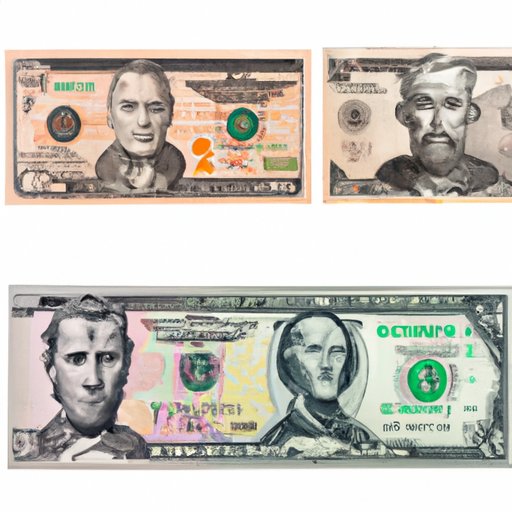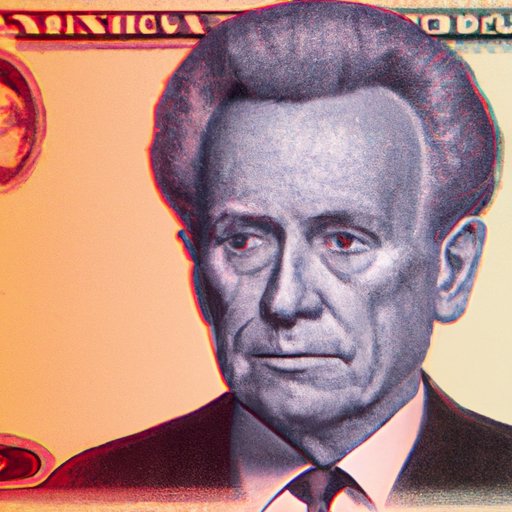
Introduction
Money is a ubiquitous part of our daily lives, but have you ever stopped to examine the faces lining your wallet? Every US bill features the portrait of a famous American president, but which presidents made the cut and why? In this article, we’ll explore the history of American currency design, breakdown which presidents are featured on which bills, and discuss the controversies surrounding currency representation. Join us for a comprehensive guide to US currency design.
History of American Currency: How Our Presidents Ended Up on the Money
The first paper currency issued in the United States dates back to 1861 during the Civil War, but it wasn’t until 1862 that US paper money became standard. Early designs featured a variety of historical figures, allegories, and even animals. However, it wasn’t until 1928 that the now-familiar portraits of US presidents were included on the bills.
The decision to feature presidents’ faces was highly influenced by past currencies and foreign currencies that had long featured important leaders. The first president to grace US currency was, of course, George Washington. Washington’s portrait has been featured on the one dollar bill since 1869. But why stop at just one president? The choice to feature more presidents on bills spoke to a sense of national pride and the importance of honoring our past leaders.
Money through the Ages: Which Presidents Landed the Big Bills
So which presidents are featured on US currency and which bills? The one dollar bill features George Washington, while the five dollar bill features Abraham Lincoln. The ten dollar bill features Alexander Hamilton, the first Secretary of the Treasury, and the twenty dollar bill features Andrew Jackson. The fifty dollar bill features Ulysses S. Grant, and the hundred dollar bill features Benjamin Franklin. Interestingly, Franklin was never a president, but his contributions to science and American society earned him a place on the $100 bill.
Beyond the faces on bills, the significance of being featured on certain denominations of currency can be debated. Rarer or more valuable bills typically feature less famous presidents, while the most common bills feature the most famous presidents. For example, the $1,000 bill features Grover Cleveland, the only president to serve two non-consecutive terms, and the $500 bill features William McKinley, both of whom are far less recognizable than Washington or Lincoln.
Why Some Presidents Made the Cut and Others Didn’t: A Guide to the Selection Process of Choosing Faces for Currency
Many criteria go into choosing which presidents are featured on American money. The most obvious is the role they played in shaping US history. Presidents who are widely recognized and respected for their contribution to the country are more likely to be featured on a bill.
The selection process for currency design has been known to be politicized as well. While there is no formal process for selecting a president to be on a bill, there are often political pressures to include or exclude certain presidents. Public opinion also plays a significant role in currency design decisions. A president’s likeness can be removed from currency in the face of controversy, as was the case with Andrew Jackson’s removal from the $20 bill, set to be replaced with Harriet Tubman.
From Washington to Biden: Which Presidents Have Been Represented on American Currency
With the addition of Joe Biden to the presidency, many have wondered if he will one day grace a US bill. Currently, there is no bill in circulation featuring a living person, and it’s unclear when or if Biden will earn a spot on currency. But which presidents have been featured on American money?
Every US currency design from 1928 to today features at least one president. However, designs before 1928 featured a range of subjects, from Martha Washington to bison and eagles. The first president to appear on US currency was none other than George Washington on the $1 bill. Since then, every president except for Ronald Reagan has appeared on at least one US bill.
Designing the Dollar: An Inside Look at How the Look of Cash has Evolved Over Time
American currency features distinct artistic design and technical features that have evolved over time to stay ahead of counterfeiters. The most notable design features include watermarks, security threads, and intricate engravings. However, over the years, banknotes have also been designed to reflect societal progress and shifts in public opinion.
Recent changes to US currency designs have included the addition of tactile features to assist the visually impaired, as well as more colorful designs for modern bills. Many of these changes are made in response to the constant threat of counterfeiters attempting to replicate US currency.

Presidential Portraits: Exploring the Artistic Choices Behind the Famous Faces on Our Money
Each president featured on American money has a distinct portrait, capturing the essence of their character and their contributions to the country. But these artistic choices don’t always come easy.
For example, the portrait of Benjamin Franklin on the $100 bill was chosen because of his contributions to science, diplomacy, and the American Revolution. However, when it came to a design for the $20 bill featuring Harriet Tubman, the process was not straightforward. The original design featured Tubman alone, but the final design was modified to include Jackson in the background, leading to controversy over the “whitewashing” of Tubman’s legacy.
The Debate Over Who Deserves to be on the Money: A Discussion on the Criticism and Controversies Surrounding Currency Design
The debate over who deserves to be on US currency goes beyond just political influence. There has been criticism for the lack of representation on US currency beyond just American presidents. Calls for diversification of currency representation have included suggestions for featuring women or people of color on US bills.
Though some progress has been made in this regard, including plans to replace Andrew Jackson with Harriet Tubman on the $20 bill, there is still a long way to go in terms of proper representation on US currency.
Conclusion
US currency design is a fascinating reflection of American history and societal progress. From the first paper currency featuring bison and eagles to colorful, tactile designs featuring famous presidents, the evolution of US currency design reflects the story of our country. As we continue to debate who deserves to be represented on our money and how the design should reflect our values, the portraits of our past presidents will continue to grace our wallets and our stores of wealth.




